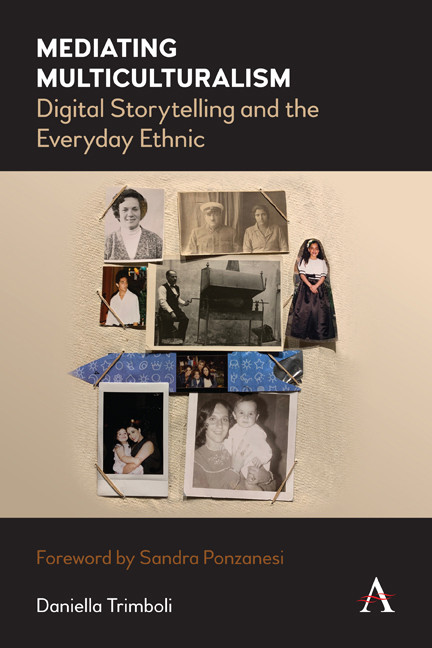Chapter Eight - Slipping Up: Performative Glitches
Published online by Cambridge University Press: 21 August 2020
Summary
The body feels pain
but the hand
keeps
reaching out.
– Deo (2017)The body does not stay in its own place.
– Butler (2015, p. 212)Temporal selves created in other circumstances intrude in unexpected ways.
– Gunew (2018)Describing their migration from Quandong province, China, to Charlottetown, Canada, Theresa states in their digital story What Is Meaningful Life? (2012– 13): ‘We landed in Canada on June 21, 2010. Yet that moment as if just happened yesterday. Adapt to a new environment has never been easy, especially for adults. You feel like you suddenly fell on the floor from the sky.’ This final sentence, presented casually among a series of other familiar statements about migration, leaps out at me. I realise that when I imagine migration – and not only the migrations of the authors I analyse in this book, but the migrations of my own family members – I tend to imagine, in the first instance, the thrilling moments of take-off or landing: the ship slowly pulling out of the dock, the plane wheels touching down. Both these imaginative poles, including the landings, are tied to the mobilising trajectory of migration, which involves moving up, up and away (Ahmed 2010a, p. 47). But migration as a fall-from-sky is a starkly different metaphor to the upwards moving description of migration typically repeated in digital stories. It sharply reminds me that migration also involves falling, moving downwards and sometimes crash landings. In this chapter I identify the ambiguities, tensions and the falls-from-the-skies in migrant digital stories. In doing so, I seek to demonstrate how these moments: (1) tell us something about the ways in which cultural diversity manifests itself/ is experienced in everyday life; and (2) can be digitally harnessed and channelled in ways that destabilise the discourse of whiteness.
I have been building the argument that recent forms of culturally diverse art practice have a tendency to operate according to an either/ or modality, despite committed and sincere attempts to open up understandings of difference by exploring its manifestations ‘on the ground’. These types of practices can be seen to be operating mostly according to what Papastergiadis (2012a) describes as the first level of cultural transformation.
- Type
- Chapter
- Information
- Mediating MulticulturalismDigital Storytelling and the Everyday Ethnic, pp. 143 - 154Publisher: Anthem PressPrint publication year: 2020



